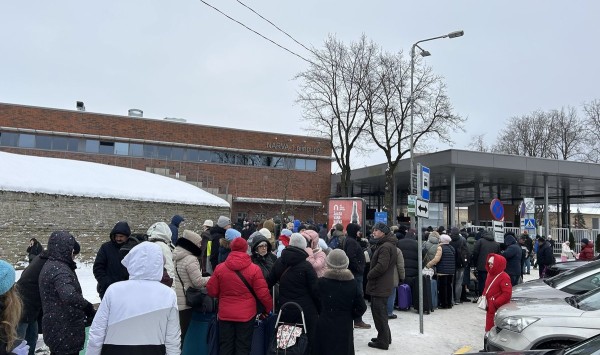27.03.2013, Kaarel Kaas, ICDS
In: “Russian Federation 2013. Short-term Prognosis.”, Karmo Tüür, Viacheslav Morozov (Eds.), “Politica” series, Vol. 14, Tartu University Press, Tartu, 2013. Pp. 36-39.
The last forecast was written against the background of general instability in Russia that caused a degree of uncertainty regarding the developments in the Russian military. However, several trends and events that were deemed probable did materialise.
Anatoliy Serdyukov, the then Defense Minister, and Army General Nikolai Makarov, the then Chief of the General Staff, have been both replaced. To be fair, both men resigned in the autumn rather than in the spring of 2012, as we predicted.
Russia’s defence spending and financing of military procurement contracts have continued to grow. A salary reform was carried out to raise the incomes of professional servicemen (officers and non-commissioned officers) and contract soldiers (known as kontraktniki).
A decision was made to increase the number of contract soldiers significantly within a 5-year term (2012–2017).
Developments in 2012
Probably the most important event in Russia’s military development in 2012 was the change of the military top brass, which resulted in Sergei Shoigu becoming the Defence Minister and Colonel General Valeriy Gerasimov becoming the Chief of the General Staff. This change may be an important factor for the direction of the radical military reforms that started in 2008.
Another important factor is the salary reform for the Russian servicemen that took many years to complete but which resulted in a considerable pay rise for officers, non-commissioned officers and professional soldiers.
When the reform came into force in early 2012, contract soldiers in the Russian military started to earn approximately 30,000 roubles per month and junior lieutenants newly graduated from military schools approximately 50,000 roubles per month (€750 and €1250, respectively).
An increased income is positive for morale and simplifies the recruitment of professional soldiers. The recruitment goal, which was made official in 2012, is to raise the number of contract soldiers in the Russian military to 425,000 by 2017. It should be noted, however, that similar goals have been repeatedly adjusted downwards in the earlier years.
Two regional developments must be also pointed out. First of all, the deployment of hi-tech weapon systems in the Baltic Sea Region has continued. In 2012, the missile brigade deployed in Kaliningrad Oblast received mobile theatre ballistic missile systems Iskander-M.
In addition, long-range air defence systems S-400 were also deployed in Kaliningrad.
Secondly, in October 2012 the Russian Army resumed combat operations intended to suppress insurgents in the North Caucasus. In 2008 the army handed over the responsibility for “anti-terrorism” operations in the North Caucasus to the Ministry of the Interior, but
the recent escalation of this conflict again required the intervention of the regular forces.
Predictions for 2013
The most immediate effect of Sergei Shoigu’s and General Gerasi-mov’s rise to key positions in the Russian military will be staff changes. Many Serdyukov’s and Makarov’s men in the Ministry of Defence and the central apparatus of the General Staff have been already forced to leave and in the first half of 2013 the wave of “purges” will reach the regional level and mid-ranking officers.
This large-scale “blood change” has somewhat destabilised decision-making processes in Russia’s defence sector. However, by the second half of 2013 the most important staff changes will have been completed, giving way to stabilisation.
It is very probable that a number of changes and decisions pushed through by Serdyukov will be reviewed and cancelled and the reform of the Russian military will grind to a halt and its certain aspects will be reverted.
Changes in the military training system introduced in the course of the reform will be cancelled (to the extent to which it is deemed possible); the headquarters of the Russian Navy, which were officially moved to Saint Petersburg in October 2012, will be returned to Moscow; the former powers and staff of the central headquarters of service branches that suffered seriously in the course of the reform will be restored (at least partially).
A pressure to increase the duration of conscription service to 1.5 years (it has been 12 months since 2008) coming from the conserva-tive wing of the General Staff is likely to rise. However, it is unlikely to result in the actual increase of the conscription service duration.
The brigade-based operations structure and the command structure based on four strategic commands pushed through during the reform will be kept.
Shoigu’s and Gerasimov’s leadership will increase the morale of the Armed Forces and improve relations with the defence industry. In its turn, this latter development will bring about a certain acceleration of weapon procurement contracts and a rise in their volumes.
Russia’s defence spending will continue to rise – in 2013 it will amount to 2.1 trillion roubles (approximately €52.27 billion) and by 2015 it is already planned to raise it to 3 trillion roubles (approximately €74.67 billion).
The financing of the national rearmament programme will rise substantially next year (in addition to the defence expenditures), reaching 1.3 trillion roubles (approximately €32.35 billion). In 2012 this programme received 900 billion roubles (approximately €22.4 billion).
Starting from 2013, the West Strategic Command (the former Moscow and Leningrad military districts and Kaliningrad exclave) will become a prioritised region in Russia’s rearmament programme, receiving significant amounts of new weaponry and equipment. It will substantially increase the capabilities of the Russian military in the Western direction within the next 4–5 years.
The Zapad-2013 strategic exercise scheduled for the autumn of 2013 will include exercises of large-scale conventional combat operations directed against NATO in an operations area that includes the Baltics and Poland. An emphasis will be put on keeping NATO’s reinforcements out of the region, using air defence systems, Russia’s Baltic Fleet and surface-to-surface tactical ballistic missile systems.
Russian Military 2013 – Short-term Prognosis
Arvamus
TRENDING
























